
Spinach is one of my favorite greens to grow in the garden for several reasons. It is the first crop that can be planted and harvested in spring; it survives over the winter when planted at the end of summer, and doesn’t require much space in the garden.
I have been successfully growing overwintering spinach in a cold climate for several years. This method was actually discovered by accident when some of last year’s spinach began to grow new leaves in the spring. I was amazed! I couldn’t believe that spinach could survive such low temperatures, but it does. We are in Alberta, Canada, plant hardening zone 3.
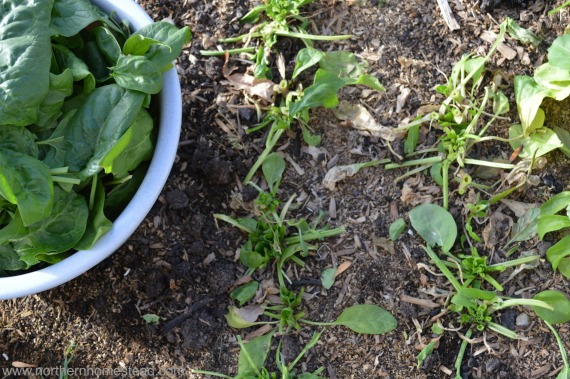
I began planting spinach whenever there was available space for a fall harvest. Before winter arrived, I would harvest the spinach by cutting off the tops and leaving the roots in the ground. I was pleased to see that many of the plants survived the winter and continued to grow in the spring.
These greens provided an early harvest and helped protect the soil from weeds before we were able to tend the garden. This is one of the significant benefits of growing overwintering spinach. We actually began planting spinach in August with the intention of having an early spring crop. Some years we also get a nice fall crop.
The process of growing overwintering spinach:
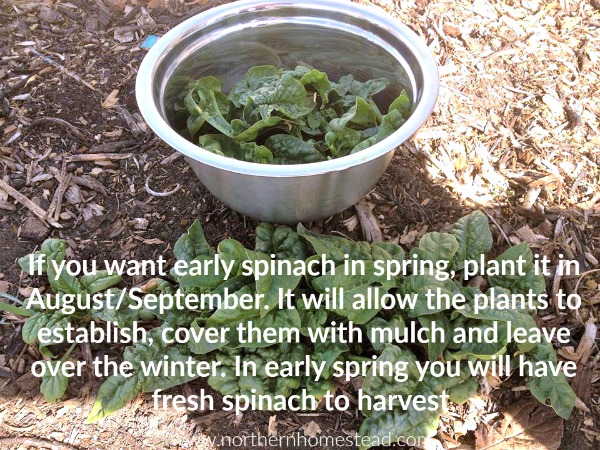
- Plant spinach in late summer (August) as soon as space becomes available.
- Let the spinach plant mature to at least 2 inches before cold and frost come. If it grows bigger, you can harvest the leaves.
- Let the spinach plant go dormant in winter without disturbing it (just leave it alone).
- You do not have to cover the plant even in zone 3 (where temperatures drop to -40), but you can add a layer of mulch if you haven’t already.
- Let the spinach plant regrow in spring.
- Harvest and enjoy the earliest, and probably best, spinach you’ve ever had.
Below, we are sharing a video that was created over the course of a year. It features various clips of planting, growing, and harvesting overwintering spinach in a cold climate. I began filming in October, so you’ll notice that the plant locations change throughout the video.
If you have trouble seeing the video, go here.
Selfseeded vs early-spring planted spinach
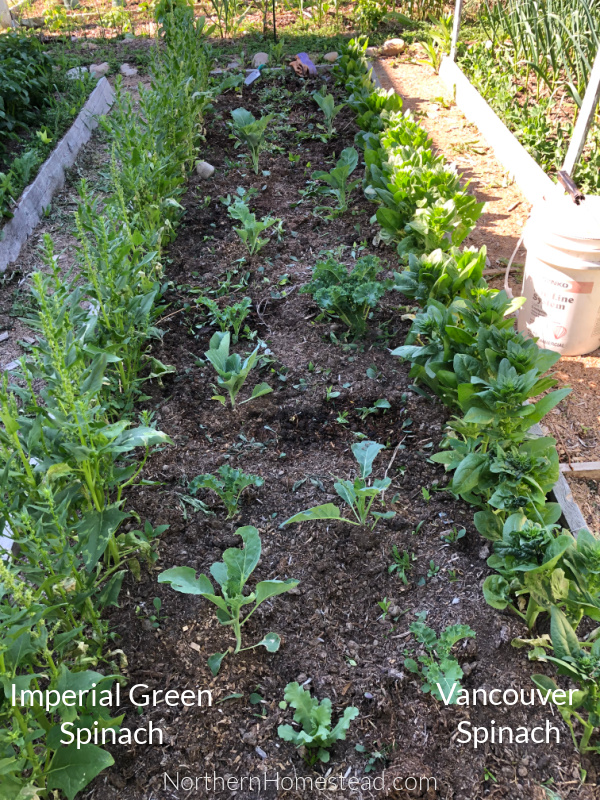
What spinach variety to grow

Over the years, we have tried different spinach varieties. For overwintering or self-seeding spinach, Bloomsdale is our favorite. It performs well and is a heirloom variety, which means the seeds are true to type. For spring planting, Vancouver is a good choice.
If your climate permits winter harvesting, you can grow more than just spinach. Here are some inspiring books on winter gardening.
Plant location for spinach
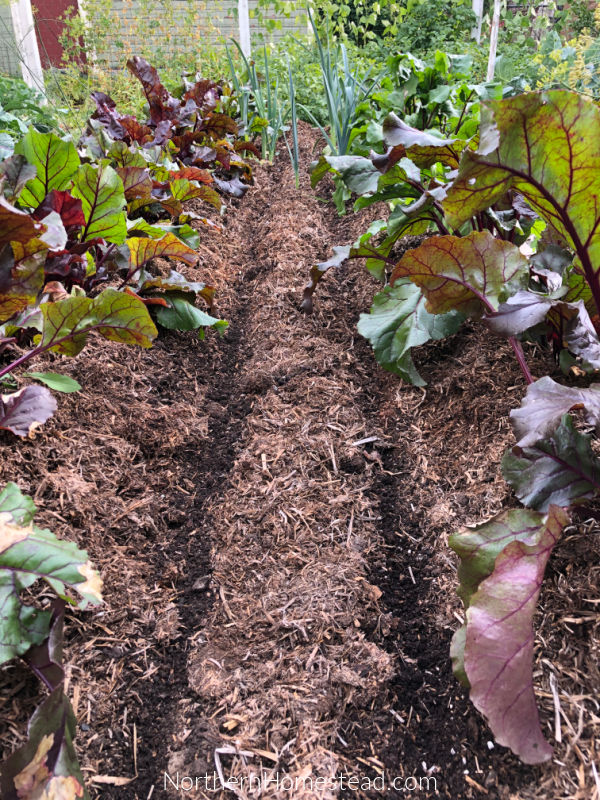
Since spinach grows best in early spring or fall, it doesn’t require space in the main season garden. We have had great success growing it either at the edge or the middle of a bed; by the time the main crop plants need the whole bed, the spinach will have been harvested.
Planting fall spinach after garlic is also a great option, as garlic is often one of the first plants to be harvested.
Self-seeding spinach in the same bed as squash is a good option; by the time the squash needs the space, the spinach will be ready for harvest. Leave a few spinach plants to go to seed to self-seed again.
It is suggested to rotate beets, chard, and spinach to avoid leaf miners. Even though we do have leave miners, I haven’t found it necessary to be overly careful. If you find it to be a problem, rotating those greens or covering the plants might be an option.
Favorite spinach recipe

Our favorite way to enjoy spinach is with pasta and tofu. This dish is also great for using up leftover pasta of any kind and fresh or frozen spinach.
In a good-sized pan, sauté the garlic in olive oil for a minute or two, then add the tofu. Season with turmeric for color, and salt or soy sauce. Once the tofu is heated through, add the spinach and let it wilt a bit before incorporating the pasta. Heat everything together, season to your liking, and serve. It’s quick, easy, and delicious!
Preserving Spinach
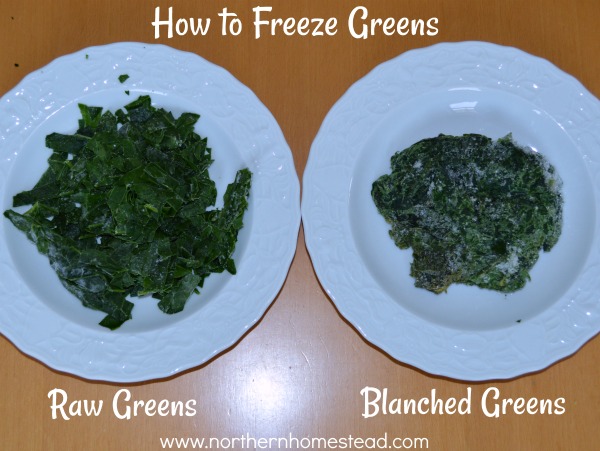
When growing overwintering spinach, as you see in the video, the plants can be very productive. We often harvest enough spinach to get us through the winter. Spinach can be frozen raw or blanched. Here is how.
We invite you to subscribe to Northern Homestead and follow us on Facebook or Pinterest for the latest updates.




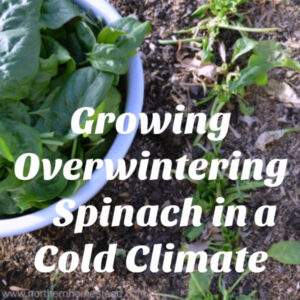
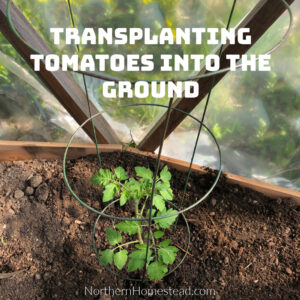
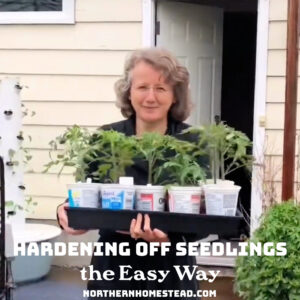
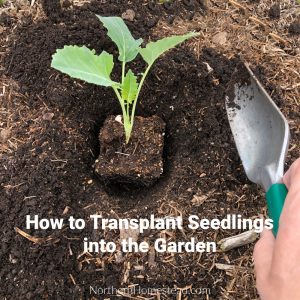
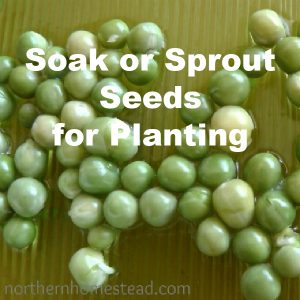
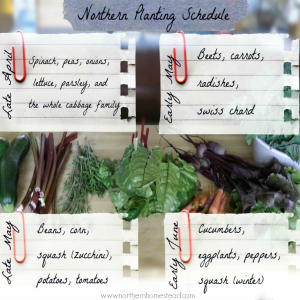
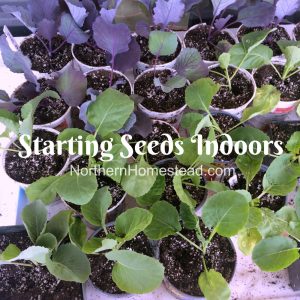
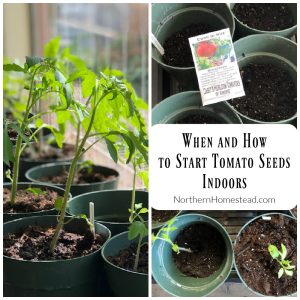
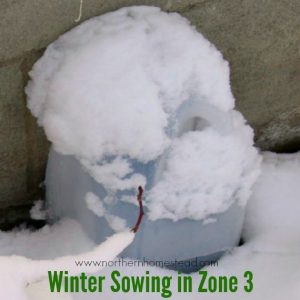
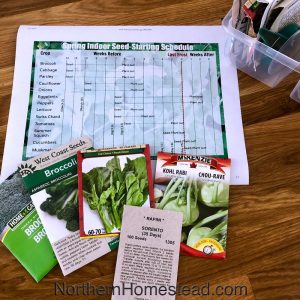

I live in zone 3 (Manitoba), and I have some empty space and a fresh package of spinach seeds. I’m going to try this! I’ll plant it in the same area as my garlic. Do you know if there are any other things you can plant like this? I’ve had other plants survive the winter if there’s a deep snow cover – even had several small (missed, and forgotten, alas) potatoes that survived the winter and sprouted themselves. Thank you for the inspiration!
Good luck Heather with your trial. I am very curious to hear how it will work for you. The difference between our and your weather is the long stretch of -40. We do not get that. It is usually just a touch down. But with a good snow cover it still should work. I don’t know of any other annual plant that would do that except garlic and spinach. Happy gardening!
Swiss Chard will overwinter too. It did it in my garden and like you, Anna it was an accidental surprise!
It is always worth trying, I have Swiss chard plants still in the garden, leaving them to see what happens. Thank you for sharing.
Thank you so much for the awesome information! I have an unrelated question but would like to know what your practice is, How do you deal with aphids on your vegetables? Just went to check mine and found aphids all over my Chinese greens and even my beet greens!
In the outside garden, we mostly do nothing. Nature usually balances itself out. If we find that a plant needs some help. a good shower with a hose is the first thing that we do. Also be aware that if there are many ants around, they protect the aphids. You can relocate the ants by relocating the nest or spraying some cinnamon, which ants don’t like. By using pesticides in the garden, every insect gets killed. It is hard to establish the balance again.
I`m gonna try leaving my swiss chard in my North West Ontario Garden. I Tried bringing in a couple of celery plants last year they didn`t get very big But I had enough for tuna sandwiches over the winter then I stuck them back out this spring. Wonder if I mulched them and covered them in deep snow if they might make it outdoors. Also no frost here yet!!! hows everyone else fairing
Celery is semy hardy like cabbage. Also, celery regrows roots. You can plant it again so to speak. This works even with store-bought celery. Regrown will not be the same like from seeds, but a fun plant indoors for sure.